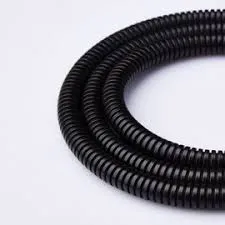Comparing Synchro Belts and V Belts for Optimal Performance and Efficiency
Synchronous Belt vs. V-Belt A Comprehensive Comparison
When it comes to mechanical power transmission, belts play a crucial role in various applications, ranging from automotive engines to industrial machinery. Among the most commonly used types of belts are synchronous belts and V-belts. Each has its unique characteristics, advantages, and ideal use cases. This article aims to provide a detailed comparison between synchronous belts and V-belts to help you understand which one may be better suited for your specific needs.
Understanding the Basics
Synchronous Belts Also known as timing belts, synchronous belts are characterized by their toothed design that mates with toothed pulleys. This design allows for precise timing and synchronization of rotation between the belt and the pulleys it connects. Made from durable materials, synchronous belts are often reinforced with fiberglass or steel cords for added strength and stability.
V-Belts V-belts, on the other hand, have a trapezoidal cross-section that fits into smoothly matching V-shaped grooves on the pulleys. This design provides a larger contact area and allows V-belts to transmit power more efficiently. V-belts are commonly made from rubber or other flexible materials, making them both lightweight and versatile.
Key Differences
1. Design and Construction - Synchronous belts feature teeth that engage with pulleys, ensuring that there is no slippage between the belt and pulley system. This is ideal for applications that require precise timing, such as in automotive engines and machinery that depend on synchronized movements. - V-belts rely on friction to stay in place within the pulley grooves. While this design can be effective for many applications, it can result in slippage under heavy loads or varying operational conditions.
synchronous belt vs v belt

2. Power Transmission - Synchronous belts excel in high-torque applications due to their ability to handle heavier loads without slipping. Their design allows for efficient power transfer, making them suitable for applications requiring consistent speed and synchronization. - V-belts are better suited for general-purpose applications where high torque is not a primary concern. While they can handle moderate loads, excessive tension can lead to slippage or premature wear.
3. Efficiency - Synchronous belts are generally more efficient than V-belts because they minimize energy losses due to slippage. Their ability to maintain a constant speed translates to improved performance and reduced energy consumption. - V-belts tend to have lower efficiency ratings, particularly in applications where wear and slippage occur. Regular adjustments may be needed to maintain performance levels, requiring additional maintenance efforts.
4. Longevity and Maintenance - Synchronous belts have a longer lifespan compared to V-belts due to their sturdy construction and minimal wear. They generally require less maintenance, making them a cost-effective option over time. - V-belts require regular checks for tension, alignment, and wear. As they age, they may stretch or become misaligned, leading to decreased efficiency and the need for eventual replacement.
5. Applications - Synchronous belts are ideal for applications that require precise timing. They are commonly used in automotive engines, conveyor systems, robotics, and any machinery where synchronous motion is essential. - V-belts are frequently used in industrial settings, home appliance motors, and various machines where flexibility and ease of installation play a crucial role.
Conclusion
In conclusion, the choice between synchronous belts and V-belts largely depends on the specific requirements of your application. If precision, efficiency, and longevity are critical factors, then a synchronous belt would be the preferable option. However, for general use where ease of installation and flexibility are more important, V-belts may prove sufficient.
Ultimately, understanding the mechanical requirements, load conditions, and operating environment will guide you toward the best belt choice. Both types of belts have their merits and can deliver reliable performance when used appropriately. Assess your needs thoroughly, and you’ll be able to make an informed decision that maximizes performance and efficiency in your applications.








